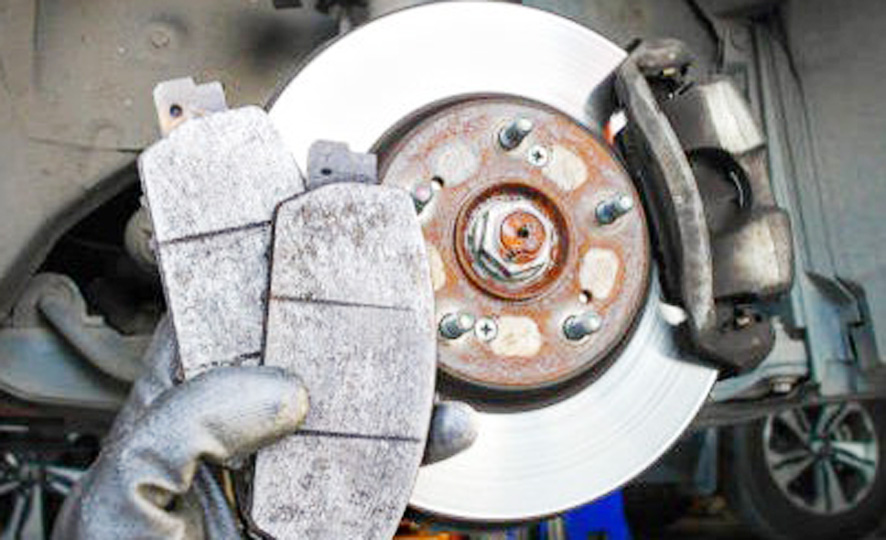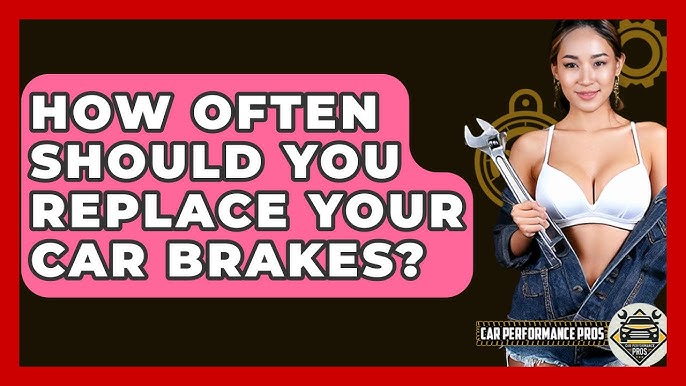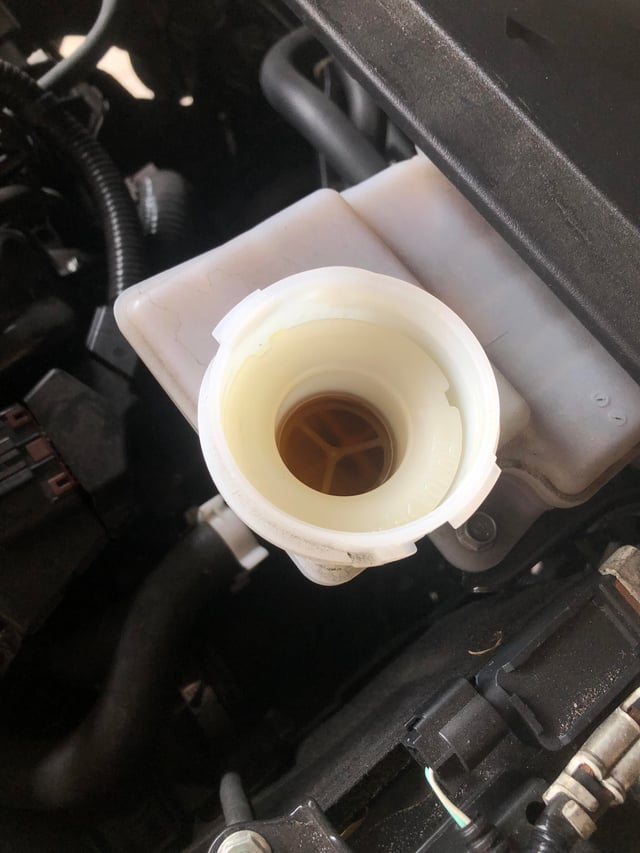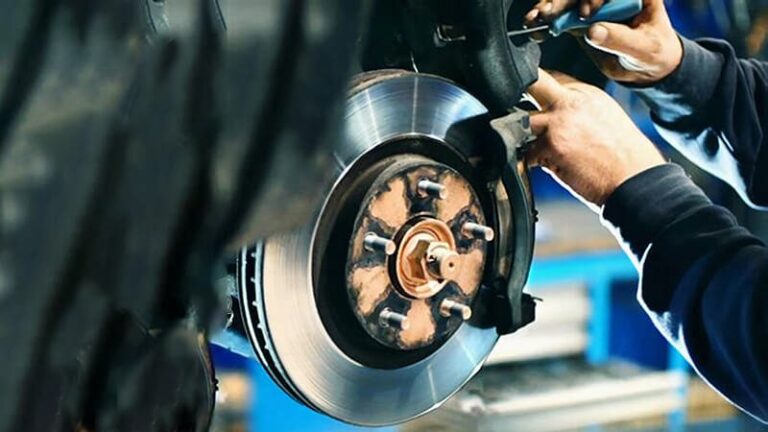I remember the first time a customer pulled into my garage complaining, “My car shakes when I’m driving—could it be the brakes?” Honestly, it’s a question I get a lot, and yes, bad brakes can absolutely make your car shake while driving—especially when you’re slowing down or coming off the highway. I’ve seen everything from warped rotors to uneven brake pad wear cause that annoying vibration in the steering wheel or floorboard. It’s easy to assume it’s a tire issue or suspension problem, but your braking system plays a bigger role in ride stability than most people realize.
Not only is it uncomfortable, but ignoring those shakes can lead to more expensive repairs and compromise your safety on the road. So, if your car’s been shuddering when you hit the brakes, stick around—I’ll walk you through what’s going on and how to fix it before it turns into a bigger headache.

Photo by linkedin
Why Do Cars Shake When Braking?
When your car shakes while braking, it’s usually a sign that something in your braking system isn’t playing nice. Brakes are designed to slow your car smoothly by applying friction, but when components wear out or get damaged, that smooth process turns into a shaky mess. I’ve seen this in my own driveway—my old pickup started vibrating so badly I thought the wheels were coming off until I realized the rotors were the issue.
The shaking typically comes from uneven surfaces or imbalances in the brake system. Think of it like trying to stop a spinning top that’s wobbling—it’s not going to be smooth. The most common culprits are warped rotors, worn brake pads, or problems with related components like calipers or suspension parts. Let’s break down the main causes and why they matter.
Warped Brake Rotors
Brake rotors are the flat, shiny discs your brake pads clamp onto to slow your car. When they warp, they’re no longer perfectly flat, causing uneven contact with the pads. This creates a pulsing or shaking sensation when you brake. I’ve seen rotors warp from overheating—like when I was towing a trailer down a steep hill and rode the brakes too hard. The heat buildup can distort the metal, especially on thinner rotors common in compact cars like a Honda Civic or Toyota Corolla.
Warped rotors are a big deal because they reduce braking efficiency and can make your steering wheel shimmy, especially at higher speeds. In the USA, where highway driving is common, this can feel downright scary. If you’re braking at 65 mph and your wheel starts shaking, it’s not just uncomfortable—it’s a safety hazard.
How to Spot Warped Rotors
You’ll feel warped rotors most at speeds above 40 mph, especially during steady braking. The steering wheel might vibrate, or the whole car might shudder. I once ignored this on an old Mustang, thinking it was just “character,” and ended up with uneven pad wear that cost me more to fix. Check for these signs:
- Vibration in the steering wheel or brake pedal
- A pulsating feel when braking
- Uneven wear on brake pads (you’ll need to inspect them)
Fixing Warped Rotors
If your rotors are warped, you’ve got two options: resurface or replace. Resurfacing (or “turning”) shaves down the rotor to restore a flat surface, but it only works if the rotor isn’t too thin. I’ve done this in my garage with a lathe, but most shops can handle it for $20–$50 per rotor.
Replacement is often better for severe warping or thin rotors, especially on performance cars or trucks that see heavy use. A new set of rotors for a typical sedan like a Ford Focus runs $50–$150 per axle, plus labor if you’re not DIYing.
Pro Tip: Always replace rotors in pairs (both front or both rear) to ensure even braking. Mixing old and new rotors is like wearing one new shoe and one worn-out one—it throws everything off.
Worn Brake Pads
Brake pads are the unsung heroes of your braking system, pressing against the rotors to create the friction that stops your car. When they wear down, they can’t grip evenly, leading to shaking. I learned this the hard way on a cross-country trip in a Chevy Malibu when my pads were down to the metal backing, causing a grinding noise and a shaky stop at every red light.
Worn pads are common in stop-and-go city driving, like in Los Angeles or Chicago, where constant braking eats through pads faster. Thin pads also overheat easily, which can warp rotors, creating a vicious cycle.
Signs of Worn Brake Pads
Check for these red flags:
- Squealing or grinding noises when braking
- Shaking or pulsating brake pedal
- Longer stopping distances
- Visible wear (pads less than ¼ inch thick)
Replacing Brake Pads
Replacing brake pads is a solid DIY project if you’ve got basic tools. I’ve swapped pads on everything from a Jeep Wrangler to a Prius in under an hour. Here’s a quick guide:
- Gather Tools: Jack, jack stands, lug wrench, C-clamp, socket set, and new pads (ceramic for quiet performance, semi-metallic for durability).
- Lift the Car: Secure it on jack stands and remove the wheel.
- Remove the Caliper: Unscrew the caliper bolts and slide it off the rotor. Hang it with a bungee cord to avoid stressing the brake line.
- Swap Pads: Pop out the old pads, compress the caliper piston with a C-clamp, and install new pads.
- Reassemble: Bolt the caliper back, remount the wheel, and torque lug nuts to spec (check your car’s manual).
- Test Drive: Brake gently at first to bed in the new pads.
Expect to pay $20–$80 for quality pads per axle. If you’re not DIY-savvy, a shop will charge $100–$200 per axle, including labor. Ceramic pads are great for daily drivers, while semi-metallic ones suit trucks or performance cars.
Warning: Never reuse worn pads, even if they look “okay.” They can damage rotors and compromise safety.
Sticking or Faulty Brake Calipers
Calipers house the brake pads and squeeze them against the rotor. If a caliper sticks—often due to rust, dirt, or worn seals—it can apply uneven pressure, causing shaking. This happened to me on a Dodge Ram I was fixing for a friend; the front right caliper was seizing, making the truck lurch every time he braked.
In the USA, caliper issues are common in regions with harsh winters, like Michigan or Minnesota, where road salt corrodes brake components. A sticking caliper can also overheat pads and rotors, worsening the shake.
Diagnosing Sticking Calipers
Look for:
- Uneven brake pad wear (one side wears faster)
- Car pulling to one side when braking
- Burning smell or hot wheel after driving
- Shaking that’s worse at low speeds
Fixing Sticking Calipers
You can sometimes free a sticking caliper by cleaning and lubricating the guide pins with high-temp brake grease. I’ve done this on older Fords with mixed success. If the caliper’s seals are shot or it’s heavily corroded, replacement is smarter. A new caliper costs $50–$150 each, and rebuilding kits are $20–$50 if you’re handy. Here’s how to tackle it:
- Remove the Caliper: Same as pad replacement—lift the car, remove the wheel, and unbolt the caliper.
- Inspect and Clean: Check guide pins for rust or binding. Clean with a wire brush and lube with brake grease.
- Replace if Needed: If seals are leaking or the piston won’t move, install a new caliper. Bleed the brake line after to remove air.
- Test: Ensure even braking with a slow test drive.
Pro Tip: Always bleed brakes after caliper work to avoid a spongy pedal. A brake bleeder kit is $10 and makes it a one-person job.
Other Causes of Shaking When Braking
Brakes aren’t always the only issue. I’ve chased down shakes that turned out to be suspension or wheel problems. Here are a few to watch for:
Loose or Worn Suspension Components: Worn tie rods, ball joints, or control arm bushings can amplify brake vibrations. I fixed a shaky Subaru Outback once by replacing worn bushings—problem solved for $100 in parts.
Unbalanced or Damaged Wheels: Out-of-balance tires or bent rims can mimic brake shake, especially at highway speeds. Get tires balanced ($10–$20 per wheel) or inspect rims for damage.
Wheel Bearing Issues: A failing wheel bearing can cause vibration under braking, often with a growling noise. Replacement costs $50–$200 per wheel, depending on the car.
Quick Diagnostic Table
| Symptom | Likely Cause | Fix Cost (DIY) | Fix Cost (Shop) |
|---|---|---|---|
| Steering wheel shakes at speed | Warped rotors | $50–$150/axle | $150–$400/axle |
| Grinding noise, shaky pedal | Worn brake pads | $20–$80/axle | $100–$200/axle |
| Car pulls to one side | Sticking caliper | $20–$150 each | $100–$300 each |
| Shake with growling noise | Wheel bearing | $50–$200 each | $150–$400 each |
When Should You Worry About Shaking?
Not every shake is an emergency, but don’t ignore it. I’ve seen folks drive on bad brakes for months, only to end up with a $1,000 repair bill when a $200 fix would’ve done the job. If the shaking is mild and only happens at high speeds, you’ve got some time to diagnose—start with rotors or pads.
But if you feel grinding, hear loud noises, or the car pulls hard to one side, get it checked ASAP. Brakes are your car’s most critical safety system, and in the USA, where roads range from icy mountain passes to scorching desert highways, you can’t afford to take chances.
Warning: If your brake pedal feels spongy or goes to the floor, stop driving immediately. You could have a brake fluid leak or air in the lines, which is a serious safety risk.
How to Prevent Brake-Related Shaking
Prevention is cheaper than repair, and I’ve learned a few tricks to keep brakes smooth. Here’s what works:
Regular Inspections: Check pads and rotors every 10,000–15,000 miles, especially if you drive in stop-and-go traffic or tow heavy loads. I pop the wheels off my F-150 every oil change to peek at the brakes.
Avoid Overheating: Downshift to slow down on steep hills instead of riding the brakes. I learned this towing a boat through the Rockies—engine braking saved my rotors.
Clean and Lube: Keep caliper pins and pad contact points lubricated with high-temp grease. I do this yearly on my cars to prevent sticking.
Quality Parts: Cheap pads and rotors wear out faster and can cause issues. Spend a bit more on brands like Bosch or Brembo for reliability. I’ve had great luck with ceramic pads on my daily driver for quiet, long-lasting performance.
DIY vs Professional Repair
If you’re a DIYer like me, brake jobs are rewarding and cost-effective. Basic tools and a few hours can save you hundreds. But if you’re not comfortable with jacks, torque wrenches, or bleeding brakes, a shop is the safer bet.
For complex issues like ABS problems or suspension work, I’d recommend a pro unless you’ve got serious experience. In the USA, labor rates vary—$80–$150/hour in cities like New York, less in rural areas. Always get a quote upfront and check reviews for trustworthy mechanics.
Choosing the Right Brake Components
Not all brake parts are created equal. Here’s a quick guide to picking the right ones for your driving style:
Daily Drivers (e.g., Honda Accord, Toyota Camry): Ceramic pads and standard rotors. They’re quiet, low-dust, and last 30,000–50,000 miles. Expect $100–$200 per axle for parts.
Trucks/SUVs (e.g., Ford F-150, Jeep Grand Cherokee): Semi-metallic pads and heavy-duty rotors. They handle towing and heavy loads better but are noisier. $120–$250 per axle.
Performance Cars (e.g., Mustang, Subaru WRX): High-performance pads and slotted/drilled rotors. They offer better grip and heat resistance but wear faster. $150–$400 per axle.
Pro Tip: Check your car’s manual for rotor thickness specs before resurfacing. If they’re below the minimum, replace them—no exceptions.
Driving Conditions and Brake Health
Where you drive matters. In the USA, brake wear varies by region and habits:
Urban Areas (e.g., LA, Chicago): Stop-and-go traffic eats pads and rotors fast. Inspect every 10,000 miles.
Cold Climates (e.g., Minnesota, Vermont): Road salt corrodes calipers and rotors. Rinse brakes after winter drives and lube components yearly.
Hot Climates (e.g., Arizona, Texas): Heat can warp rotors, especially on smaller cars. Use quality rotors and avoid aggressive braking after high-speed runs.
Mountainous Areas (e.g., Colorado, Utah): Steep descents overheat brakes. Downshift and use engine braking to reduce wear.
Real-World Example
Last summer, a buddy called me in a panic—his SUV was shaking like crazy on the interstate. I had him pull into my garage, and we jacked it up. The front rotors were warped from towing his camper, and the pads were down to the backing. We swapped in new ceramic pads and rotors for about $150 in parts, and the shake was gone. A shop would’ve charged him $400+. Moral of the story: catch issues early, and don’t skimp on parts.
Conclusion
If your car shakes when braking, don’t brush it off—it’s your vehicle’s way of waving a red flag. Bad brakes, like warped rotors, worn pads, or sticking calipers, are often the cause, and addressing them promptly can save you money and keep you safe. Whether you’re a DIYer tackling a brake job in your garage or an everyday driver scheduling a shop visit, understanding the problem empowers you to make smart choices.
Regular maintenance, quality parts, and mindful driving habits can keep your brakes smooth, no matter if you’re cruising through city traffic or hauling a trailer across the country. Next time you feel that shake, check your brakes first—it’s usually the key to a steady ride.
Keep a small notebook in your glovebox to track brake inspections and replacements. It’s a simple way to stay on top of maintenance and avoid surprises.
FAQ
Why does my steering wheel shake when I brake at high speeds?
This is usually caused by warped brake rotors, which create uneven contact with the brake pads. The vibration travels through the suspension to the steering wheel. Inspect your rotors and consider resurfacing or replacing them.
Can worn brake pads cause my car to shake?
Yes, worn pads can’t grip the rotor evenly, leading to shaking or pulsating. If your pads are thinner than ¼ inch, replace them immediately to avoid damaging rotors.
How often should I check my brakes?
Inspect brakes every 10,000–15,000 miles or during oil changes, especially if you drive in heavy traffic or harsh conditions. Look for pad wear, rotor damage, and caliper issues.
Is it safe to drive with a shaking car?
Mild shaking at high speeds can be driven short distances to a shop, but severe shaking, grinding, or pulling to one side means stop driving and get it fixed immediately.
Can bad tires cause shaking when braking?
Yes, unbalanced or damaged tires can mimic brake-related shaking. Check tire balance and inspect for bent rims or uneven wear before assuming it’s a brake issue.



